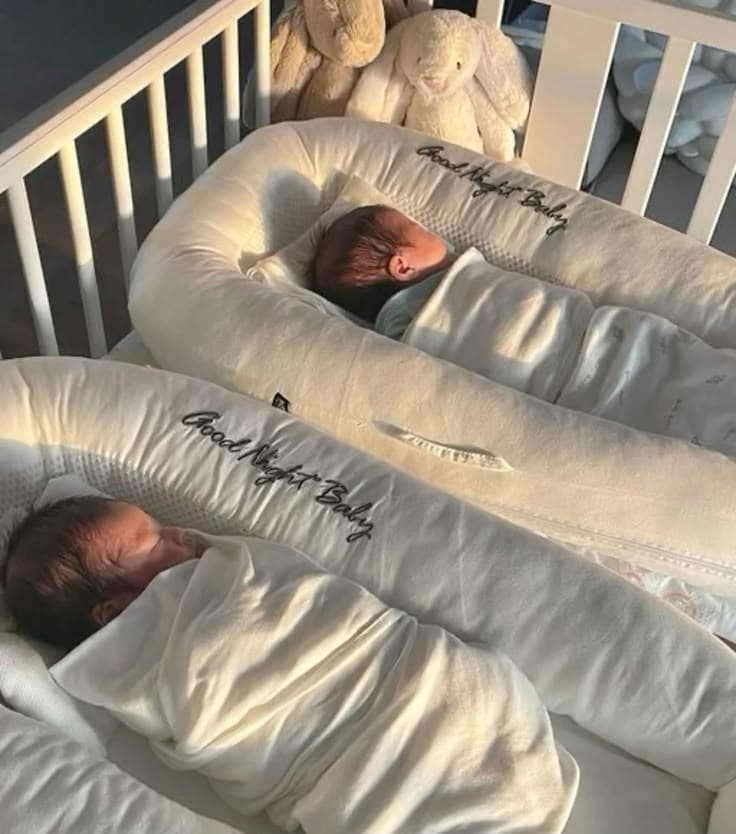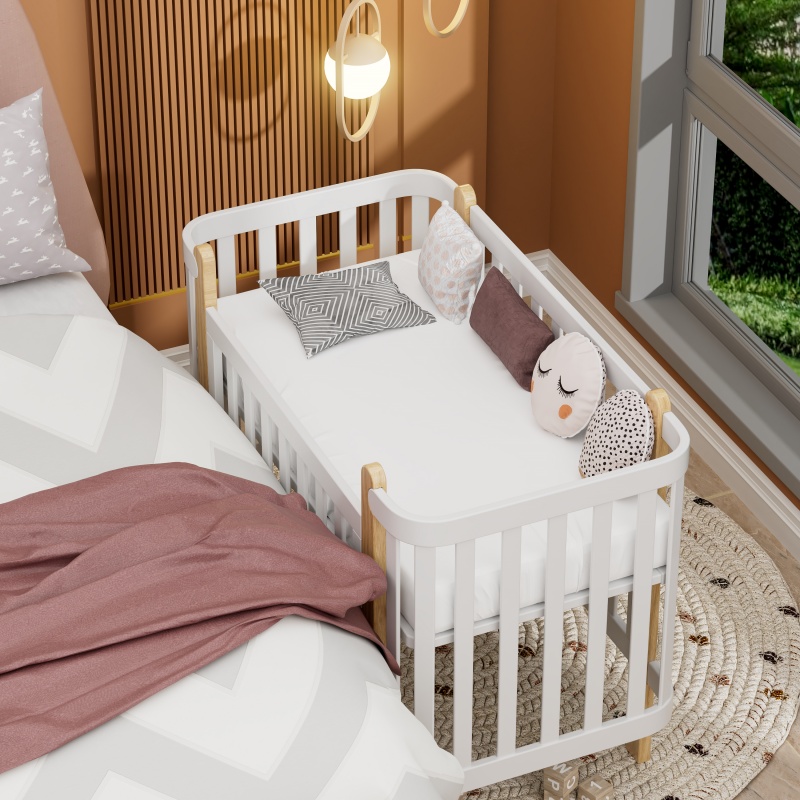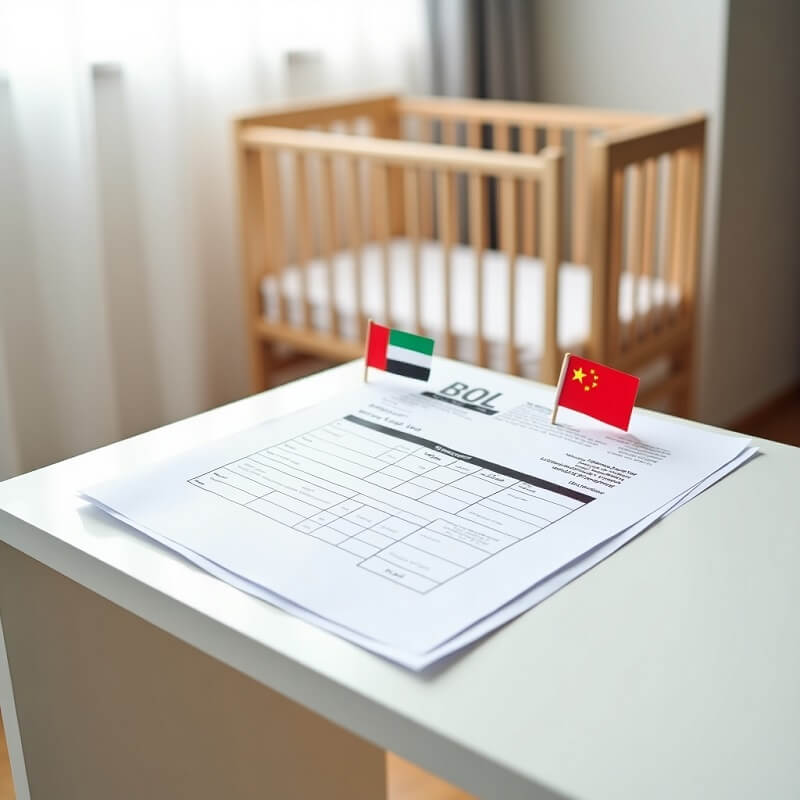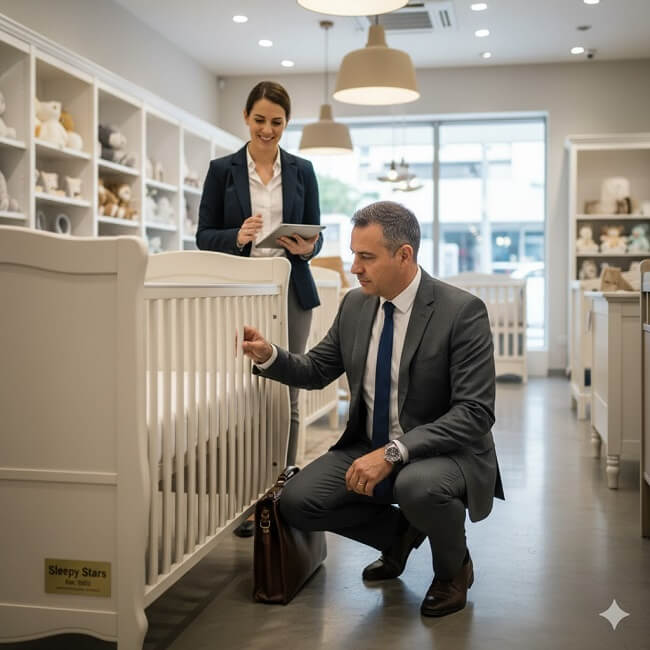The arrival of twins is twice the wonder—and twice the decisions. For new parents of multiples, one early question often stands out: Should our babies share a crib? While sharing saves space and streamlines those bleary-eyed nights, safety worries understandably creep in.
Can twins sleep in the same crib without risking harm? The answer isn’t a simple yes or no. While the idea of twins sleeping side by side may feel natural—echoing their time in the womb—medical guidelines and real-world risks require careful consideration.
This guide offers clarity, blending evidence-based safety standards, heartfelt parent experiences, and pediatric expertise to empower you with the knowledge needed to make confident choices.
Pros and Cons of Twins Sharing a Crib
Co-bedding twins can be a divisive topic. To help you weigh your options, here’s a balanced look at the advantages and challenges:
Pros of Crib Sharing
Promotes Bonding: Twins often soothe each other through close physical contact, mimicking their time in the womb. Studies suggest this familiarity can reduce stress and improve sleep quality in newborns.
Simplifies Nighttime Care: Having both babies in one crib streamlines feeding, diaper changes, and comforting—especially during exhausting newborn nights.
Cost-Effective: Investing in a single crib initially frees up resources for other essentials—think double strollers, car seats, or a stockpile of diapers.
Space-Saving: Ideal for smaller homes or nurseries where fitting two cribs isn’t feasible.
Cons of Crib Sharing
Increased SIDS Risk: The AAP warns that sharing a sleep space raises the risk of Sudden Infant Death Syndrome (SIDS), particularly if safety guidelines aren’t strictly followed.
Overheating Concerns: Twins’ body heat can combine, raising the crib’s temperature beyond safe limits (68–72°F is recommended).
Disrupted Sleep: One baby’s stirring or crying could disturb the other, leading to frequent wake-ups for both infants—and exhausted parents.
Short-Term Solution: Even if co-bedding works initially, most twins outgrow a shared crib by 3–4 months as they begin rolling, pushing up, or simply needing more space.
Crib sharing can work temporarily for some twins, but strict adherence to safety guidelines is non-negotiable. For others, separate sleep spaces from day one may be the wiser choice.
In the following section, we’ll delve into the official safety guidelines for crib sharing, ensuring you have the tools to protect your twins if co-bedding aligns with your family’s needs.
Official Guidelines for Twins Sharing a Crib

Deciding to co-bed twins isn’t a free-for-all—it’s a carefully choreographed dance with safety as the lead partner.
Medical organizations like the American Academy of Pediatrics (AAP) don’t explicitly endorse crib-sharing for twins, but they do acknowledge that if parents choose this route, strict protocols must be followed. Let’s break down the non-negotiables:
The AAP’s Stance
The AAP’s safe sleep guidelines prioritize reducing SIDS risks, emphasizing both twins must always be placed on their backs, even if they eventually roll over. Ideally, twins should have individual bassinets or cribs. However, if sharing a crib temporarily:
- No Loose Bedding: Swaddles, blankets, or stuffed animals are banned—only fitted sheets and sleep sacks.
- Firm Mattress: Test it by pressing down—if it leaves an indentation, it’s too soft.
- Crib Size: The crib must meet ASTM safety standards (at least 28″ x 52″) to prevent overcrowding.
The Golden Rules for Co-Bedding
Positioning Matters: Place twins at opposite ends of the crib, feet-to-feet, to minimize face-to-face contact and overheating. Alternatively, use a vertical divider (sold as “crib partitions”) to create separate zones.
Monitor Like a Hawk: A video baby monitor with split-screen capability lets you watch both babies simultaneously. Some parents also use wearable oxygen monitors for peace of mind.
Dress for Safety: Overheating is a silent risk. Dress each twin in a single layer (e.g., a cotton onesie) and keep the room between 68–72°F.
No Swaddling Together: Swaddled twins can overheat or entangle limbs. If you swaddle, use individual sleep sacks and ensure their arms are free once they show signs of rolling.
How Long Can Twins Share a Crib?
There’s no universal expiration date for crib-sharing—it depends on your twins’ growth, mobility, and temperament. Here’s a general roadmap, though your babies may rewrite it:
Newborn Stage (0–3 Months)
What’s Possible: Many parents successfully co-bed during this phase. Newborns are less mobile, and the womb-like closeness can soothe them.
Watch For: A significantly smaller twin may get crowded. Jerky movements can wake their sibling.
Transition Phase (3–6 Months)
The Tipping Point: Around 3–4 months, twins often start rolling, pushing up, or grabbing. These milestones signal it’s time to separate them.
Why It’s Critical: Active babies can tangle limbs or press against each other, blocking airflow. In addition, two growing bodies need room to stretch. Crowding increases SIDS risks.
Post-6 Months: The Hard Stop
Pediatricians Agree: By 6 months, crib-sharing is unsafe. Twins’ increased mobility and strength make accidents more likely.
Transition Tips: Gradual Shifts: Start with naps in separate cribs to ease the adjustment.
Exceptions to the Rule
Premature Twins: Often need separate sleep spaces longer due to medical fragility.
Developmental Delays: Consult your pediatrician—some twins may co-bed longer under supervision.
A Pediatrician’s Note: “I’ve seen twins thrive sharing a crib—and others who needed separation from day one. It’s not a failure to change course. Safety always wins.” —Dr. Elena Torres, pediatrician and twin mom.
Safe Crib Setup for Twins
Creating a safe sleep space for twins requires more than just following guidelines—it demands hands-on strategies to adapt those rules to real life. Here’s how to set up a shared crib safely, with practical tips that go beyond the basics:
Choose the Right Crib: Opt for a full-size crib to ensure adequate space. Mini cribs or bassinets are too small for two growing infants. Look for reinforced slats and a weight limit of at least 50 lbs to accommodate two growing babies.
Positioning for Safety: Lay twins at opposite ends of the crib, with their feet nearly touching. Avoid side-by-side positioning, as this increases the likelihood of overlapping limbs or faces pressing against each other. Parents are not recommended to use rolled-up muslin blankets as makeshift partitions; instead, consider using breathable mesh partitions.
Climate Control: Maintain the room at 68–72°F. Overheating is a silent danger—dress twins in a single layer (e.g., cotton onesies). Place the crib away from walls, curtains, or heaters. Position a low-speed fan near the crib (not directly blowing on babies) to promote air circulation without drafts.
Alternatives to Crib Sharing

If crib sharing feels too risky—or simply isn’t working—these alternatives keep twins safe while honoring their bond:
Twins Crib/Twins Bassinet: Twin-specific cribs or bassinets offer two separate sleep surfaces within a single frame, allowing twins to sleep near each other without physical contact. Many models include breathable mesh siding and adjustable height settings.
Mini Cribs: Smaller than standard cribs but larger than bassinets, mini cribs provide dedicated sleep spaces for each twin. Two mini cribs can often fit in the same footprint as one full-sized crib.
Co-Sleeper Attachments: Twin-friendly co-sleepers attach securely to the parent’s bed, allowing twins to sleep nearby in separate compartments. These units often include mesh walls for airflow and visibility.
Pediatrician Insights: Expert Recommendations
When it comes to twins sharing a crib, pediatricians emphasize that safety must always outweigh sentimentality. Below, we distill advice from leading experts to help you navigate this nuanced decision:
Prematurity and Low Birth Weight: Preterm twins or those under 5.5 lbs often lack the strength to reposition themselves if they roll or become trapped. Separate sleep spaces are non-negotiable. Even if discharged, these babies may need individual monitoring due to lingering health concerns like apnea or reflux.
Developmental Milestones: The moment either twin shows signs of rolling (usually 3–4 months), separate them immediately. Entrapment risks skyrocket once mobility begins.
Weight and Size Disparities: A significant size difference (e.g., one twin 50% heavier) can lead to accidental smothering. Rapidly growing twins may outgrow a shared crib faster than anticipated. Measure their combined length monthly.
Medical Conditions: Twins with GERD, asthma, or congenital conditions require individualized sleep setups for safe monitoring. Cerebral palsy, Down syndrome, or muscular dystrophy often necessitate adaptive cribs or specialized equipment.
Conclusion
Deciding whether twins can share a crib is one of the first of many parenting choices you’ll make for your duo. It’s a decision that blends science, intuition, and practicality. Follow AAP guidelines rigorously, even if they feel restrictive.
If co-bedding keeps you awake with worry, it’s okay to separate your twins—even if others swear by it.
For more guidance, please consult Clafbebe experts and get exclusive solutions!
Recommended Related Articles:













